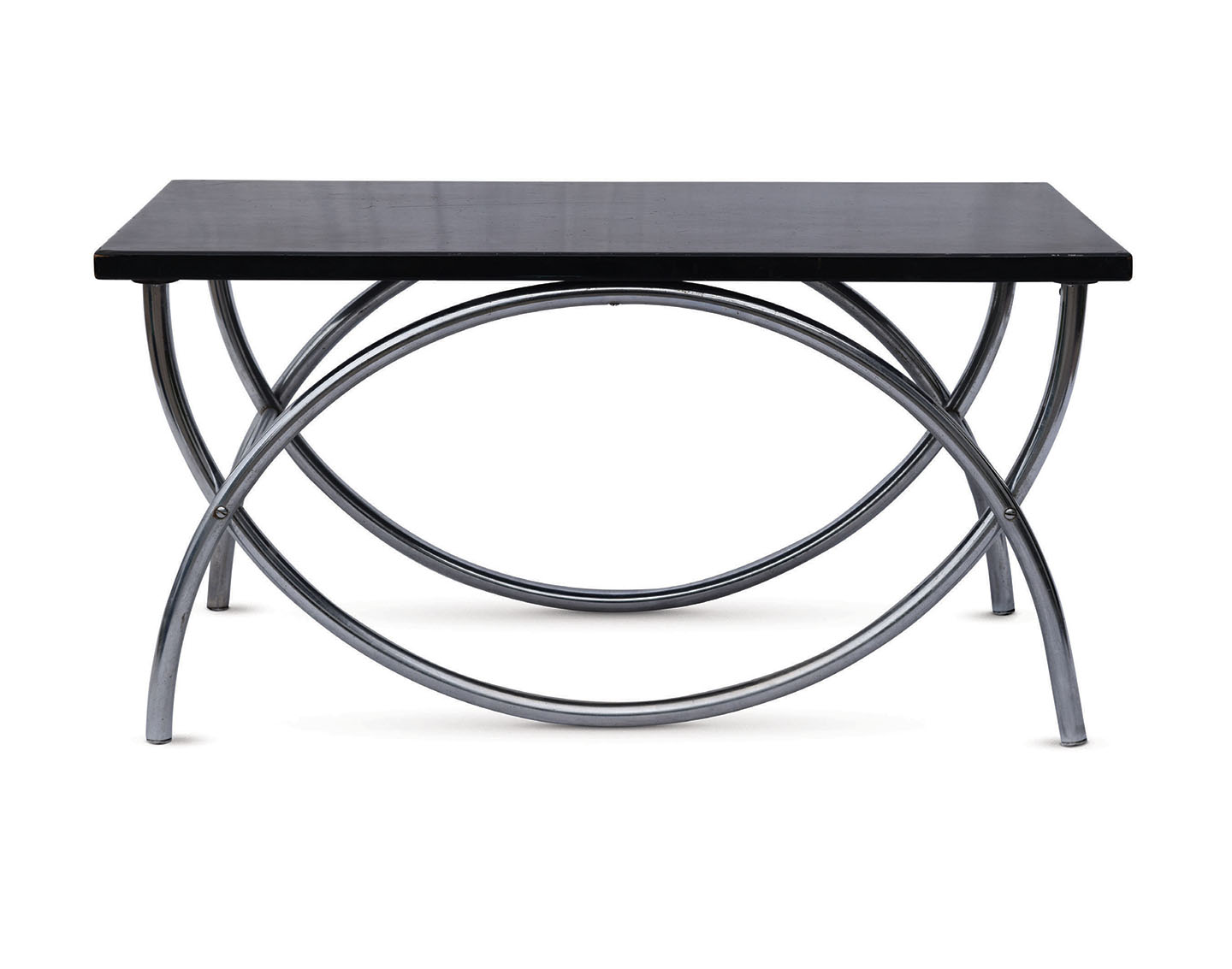Item Composition
Furniture
Item Medium
Other; Steel
Item Origin
Geneva and St. Charles, Illinois
Item Duration at Mansion
Temporary
Summary
Chromium-plated steel, Howellite (Bakelite and laminated hardwood), 18 × 34 × 20 inches. Wolfgang Hoffmann (1900, Klosterneuburg, Austria–1969, Geneva, Illinois), designer. Collection of Carl and Elizabeth Safanda
Item Composition
Furniture
Item Medium
Other; Steel
Item Origin
Geneva and St. Charles, Illinois
Item Duration at Mansion
Temporary
The Howell Company's table no. 810 is an example of the simplified, mass-produced metal furnishings that became readily available to many Americans in the 1930s. While its streamlined form suggested urbane sophistication, the durable, lightweight materials used in its construction made it eminently practical for use in the home”where interiors, and indeed living, were becoming increasingly casual.
Developments in steel and other innovations in metal production in the 1920s and early 1930s had a major impact on furniture design. One of the most dramatic processes produced seamless steel tubing. This new material had the combined advantages of being light, strong, and reasonably inexpensive.
Beginning as a foundry in 1867, the Howell Company produced fluting and sad irons in its Geneva, Illinois, factory until 1923, when it converted operations to make cast-iron furniture. It began producing seamless, chromium-plated, tubular steel frames for modern-styled furniture trademarked "Chromsteel" in 1929. Howell gained national attention when its tubular steel furniture was widely used to furnish model houses and various commercial buildings at Chicago's 1934 Century of Progress Exposition.
During that world's fair, William McCredie, Howell's co-owner, met and hired Wolfgang Hoffmann”who had designed furnishings for one of its model houses”as chief designer for his furniture factory. Hoffmann, the son of famous Viennese architect Josef Hoffmann, was considered one of America's best "modern" designers; his interiors and furnishings were featured in exhibitions, department stores, and newspapers.
From 1934 to 1942, Hoffmann worked exclusively for Howell, designing a wide variety of stylish yet affordable chromium-plated tubular steel furniture for the home and helping commercial clients with their business interiors. Hoffmann was granted at least 29 furniture design patents, all assigned to the Howell Company. When the factory converted to wartime production in 1942 during World War II, Hoffmann left the company and opened Wolfmann Studio in Geneva, where he pursued a successful career as a commercial and industrial photographer until his death in 1969.
In 1935, the Howell Company moved their headquarters to St. Charles, where they expanded both their dinette and commercial furniture lines. The company had showrooms in New York, Chicago, San Francisco, and Los Angeles in addition to a permanent display in Chicago's American Furniture Mart.
In 1954, Acme Steel Co. (later Interlake, Inc.) purchased Howell”along with subsidiaries Geneva Modern Kitchens, Elgin Kitchens, and Stanley Corporation”and operated plants in Illinois, Wisconsin, and California. Burd, Inc. acquired the company in 1975 and discontinued operations at the St. Charles plant five years later.
Item Composition
Furniture
Item Medium
Other; Steel
Item Origin
Geneva and St. Charles, Illinois
Item Duration at Mansion
Temporary


